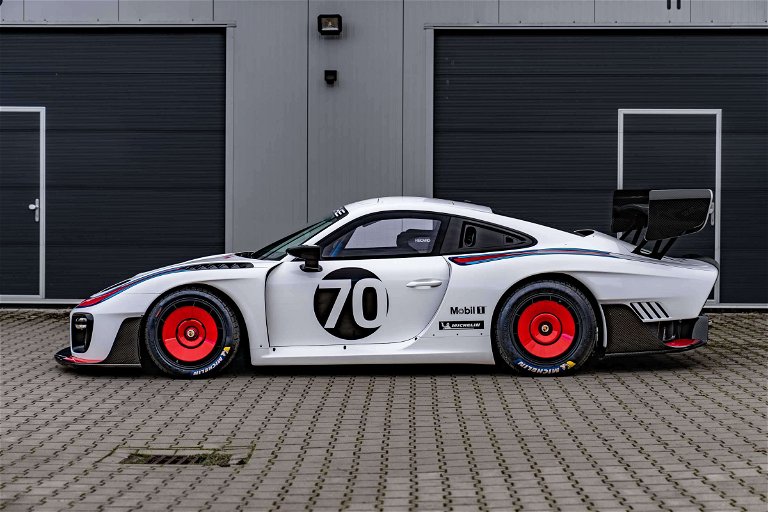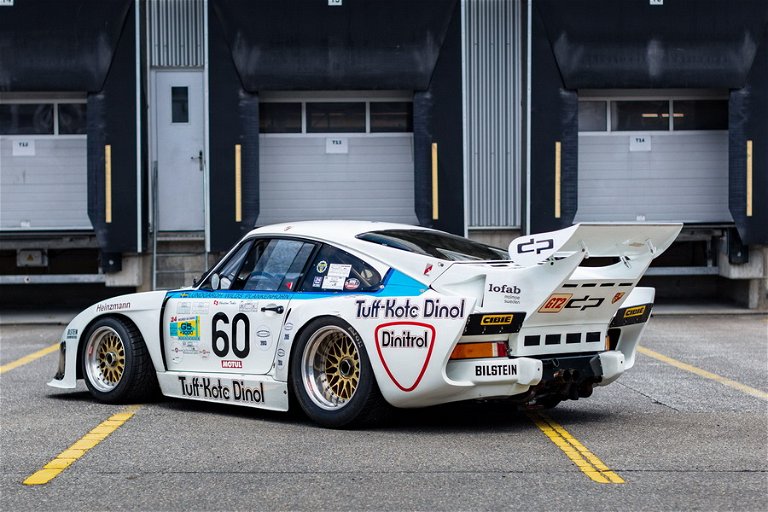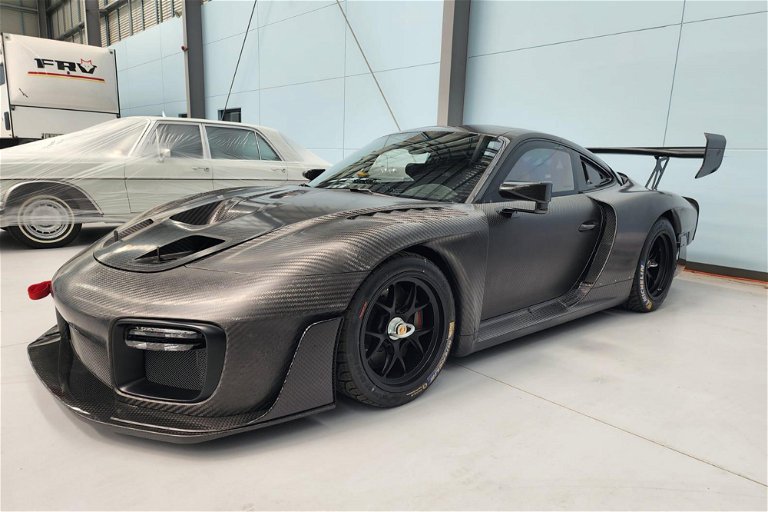By the middle of 1979, the Porsche factory had effectively ceased to produce complete 935s but independent tuners such as Kremer, Joest, and Fabcar continued to work to improve the 935’s design and built race cars around Porsche-sourced components while further developing the aerodynamics and chassis designs.
Bob Akin was one of the privateer racers who commissioned a 935-based racer to compete in the IMSA GT Championship and select races in the World Championship of Makes but knew that a standard 935 was no longer a highly competitive candidate against the new ground effect prototypes from Lola, March and Porsche’s own 956/962. Akin would have to build something outside of the box for the 1982 season, so he commissioned Chuck Gaa of GAACO to design and build a “Super GTP 935” with a monocoque bonded aluminum chassis and a Lola T600 GTP nose in an attempt to combine the best of the new ground effects technology with the power and reliability of the 935 mechanical components. Deemed the 935 L-1, it proved to be fast in a straight line but its handling was lacking precision, and it came in far overweight- equal to that of the 935 K-3 which it was intended to replace. It made its appearance at Lime Rock which served as a test for Le Mans, where it demonstrated its impressive high-speed capability, and returned to the U.S. to finish out the IMSA GT season. At the official qualifying session of the IMSA final event, Derek Bell was behind the wheel of 935 L-1 when an axle broke, sending the car into the wall and ending its chances of returning to competition before the next season.
Akin and his team had a Kremer 935 K-3 on standby which they had finished in second place at the Daytona 24-Hour race in 1982, so they were confident that they could stand a chance in the longer endurance races in 1983. Team Manager, Franz Blam, led the team to lighten and prepare the 935 K-3 and proceeded to turn in excellent results through the majority of the season. When Franz and his team pressed that they should take one last shot at building the ultimate 935, Akin was reluctant but relented.
Akin commissioned Dave Klym of Fabcar in Tucker, Georgia, whose shop was right down the road from Franz Blam’s shop. The focus was to construct a strong, rigid, and lightweight tube frame chassis which optimized the suspension pick-up points and brought the completed car’s overall weight down to the IMSA weight limit of 2,060 pounds. The wrecked 935 L-1 was dismantled and many of its parts were used in the construction of 935-84. The tube frame used the standard K3 suspension in the rear and the 935 “Moby Dick” suspension at the front. Using the 3.2 liter, twin-plug, twin-turbocharged engine used in the K3 with minor modifications. The body was an adaption of the Kremer K4 nose and the rest was of their own design. Herbert Schaupp was flown in from Austria to craft the original body from aluminum and fabricate a number of small parts necessary for the completion of the project. Once the original aluminum bodywork design was satisfactory, it was replaced with fiberglass. Through careful redesign and relocation of components, the weight of the frame alone was just 194 pounds, and approximately 100 pounds of 935 L-1’s Aeroquip lines were left unused by the completion of the build.
Following its completion, 935-84 was tested at Road Atlanta on October 26, 1983, turned very competitive lap times, and after only 20 laps and with just preliminary adjustments, proved to be four seconds faster than Akin’s K3. Testing continued on November 1st at Daytona in preparation for its first race at Daytona’s Three Hour Finale, where it qualified in third. The roster of drivers consisted of Bobby Rahal, John O’Steen, and Bob Akin. Akin pitted late in the race for a suspected flat tire but still managed to cross the finish line in second place on the same lap as Al Holbert in his Porsche-March despite the lost time.
Akin recounted in an article he wrote regarding building and racing 935-84 at Daytona after its completion: “Our expectations were high, but not high enough to prepare us for the stunning performance of the car. Never before have I felt so much in control of the situation.” In an interview from the April 2000 issue of On Track magazine, Akin stated “My one regret is that we didn’t build it sooner. If we had this car for the whole season of 1983- if we had built it in ’82- we would have won the (IMSA) Championship with it I’m sure.” 935-84 was clocked at a top speed of 218 miles per hour at Daytona- an incredible display of power, engineering, and aerodynamics for the period.
Unfortunately, 935-84 was completed at a time when IMSA was no longer recognizing the GTX class in which the 935s were running in, and were forced to compete alongside the GTP (ground-effect prototype cars) that were entering and dominating the competition- in turn, ending the era of the 935 “silhouette” cars. While Akin retired 935-84 when he received his 962, 935-84 continued to race until 1986 in the silver Ralph Lauren livery with bright blue decals.
Highlights
- Built for Bob Akin by Fabcar in Tucker, Georgia to compete in the 1984 IMSA GT Championship
- Restored by Jerry Woods Enterprises in 2007
- Extensive mechanical restoration to return the car to track-worthy condition by its most recent owner
- Driven at Rennsport Reunion V at Laguna Seca in 2015 by Patrick Long
- FIA Historic Technical Passport for IMSA GT class dated June 2012
- Binder with numerous period construction and racing photos








































































































